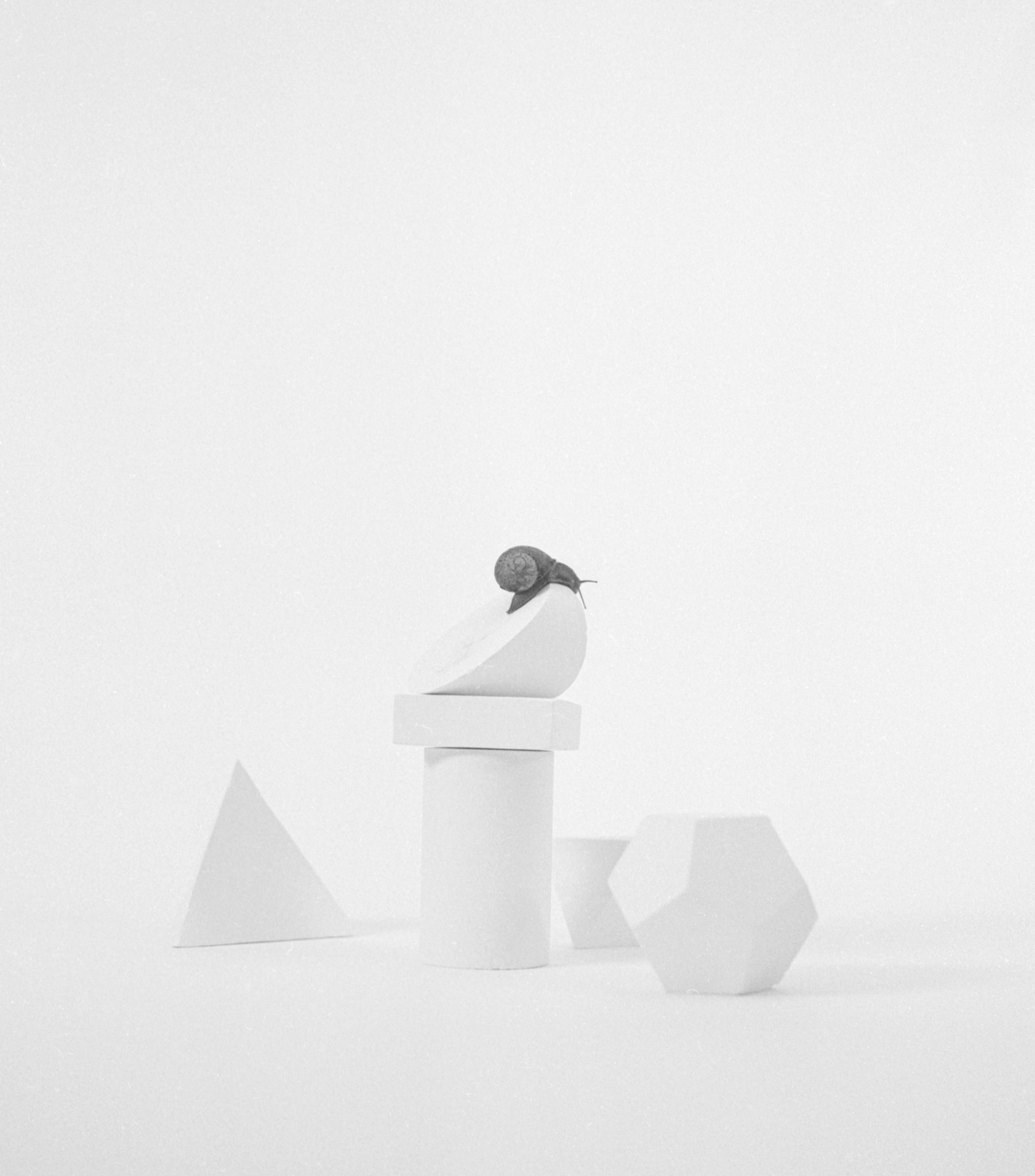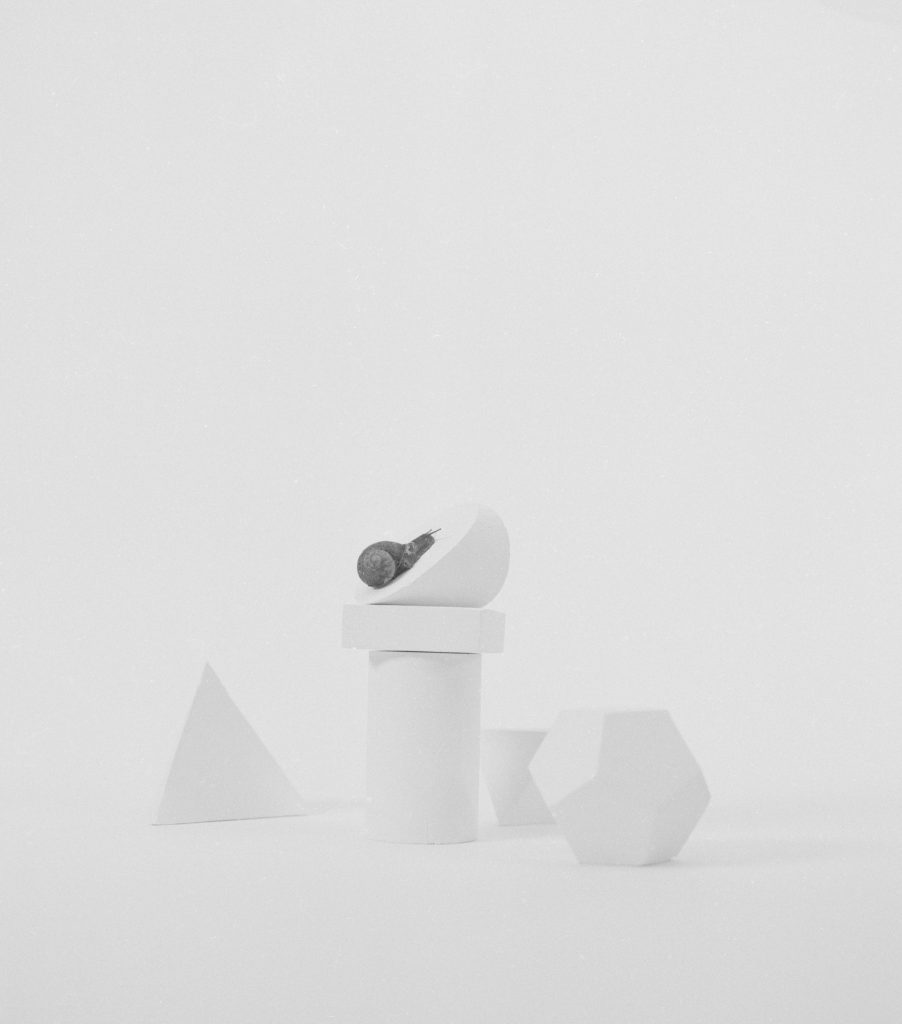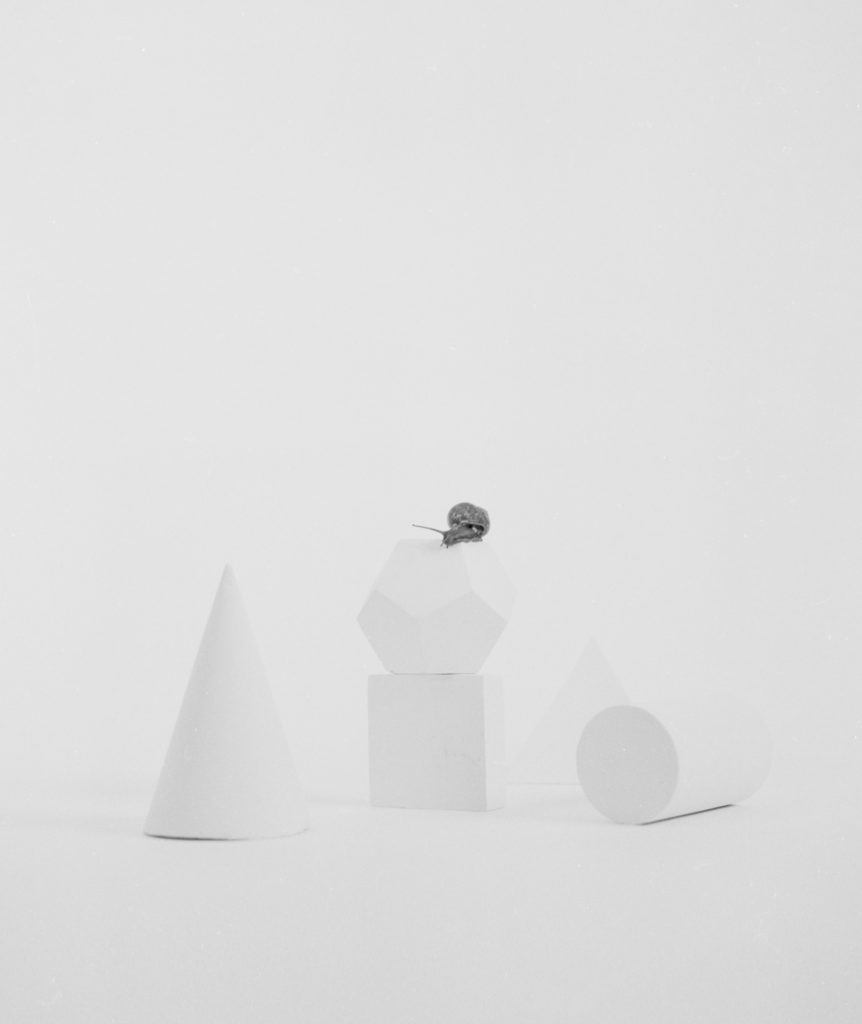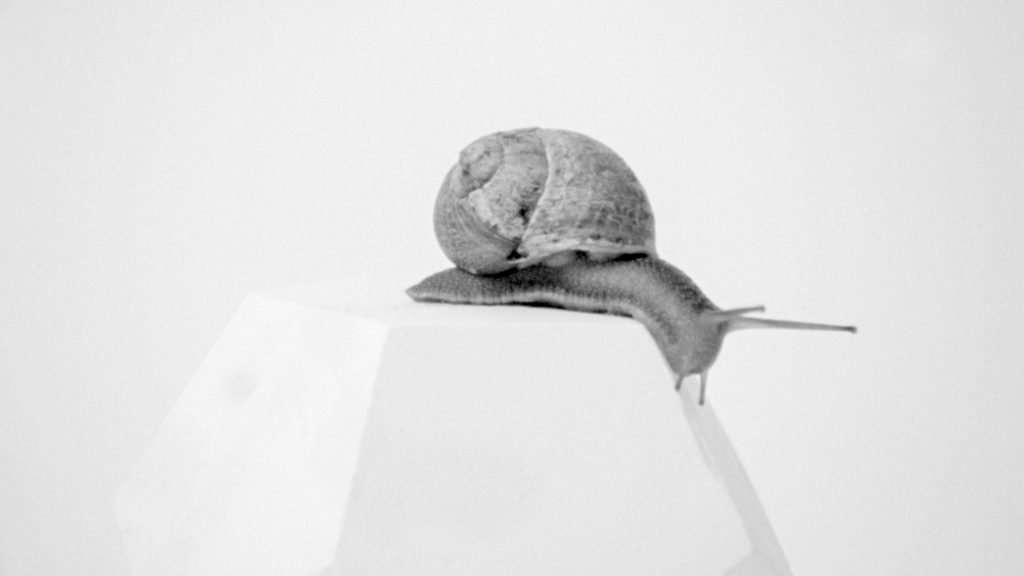All content © Axel Antas unless otherwise stated.



Still Life (Inertia Geometry) presents a minimalist composition that evokes some deep, fundamental questions about our perception of a world, assumed to be fully calculable yet its inherent poetics provoke a dialectal debate. Euclidean geometry, represented here in a number of non-reflective, geometric solids is investigated by a group of snearls. In its simplicity at the first glance this work gradually reveals its underpinned universal complexity – and the conflicts that come with it. There are scientific and poetic aspects. One can sense a trace of melancholia but also of discord.
From the Renaissance to Modernism, these types of still life arrangements of geometric solids kept recurring throughout the visual arts. They tell a story of the obsession in science and philosophy of reductionism towards irreducible essences. Along comes the sober fact, that all atomic structures of solid matter are limited towards just six numbers of possible folds. Yet, Antras inconspicuous inclusion of a polyhedron gives us a hint towards potential complexities that go beyond crystalline matter – as well as all the related algebraic trajectories which already preoccupied Johannes Kepler’s mind.
They all point to an old paradox – If postulated, that everything in nature is built out of these simple and perfect geometric shapes, why we cannot perceive all of them at human scale?
Meanwhile, and in magnificent contrast, the snails crawl thoughtfully over these objects, perceiving these plane geometric surfaces with their organic, slimy bottom and amorphous topology. As in Renaissance still life painting, the draped cloth covering the hard edges, the snails are the perfect stand-in for non-euclidean geometry, as the much needed counterpart. The snail’s long investigation of these bodies consists of a multi-sensuous and multi-facetted act of touch, given from a living species to an inanimate object. Snails are not slow (an all-too human misunderstanding) but they are just more thorough.
What Antas entitled “Still Life” also refers to the temporal dimension of the piece in which we encounter different time scales. The slow moving snearls create a quasi still life for human perception. But eith the parenthesized “inertia geometry” in the title we may need to zoom out a bit, as all these bodies are not only in motion but also in slow progressing decay. The snearl’s action evokes a glacier-like transformation of a human-made linear structure. One could call this Poiēsis wins over Technē. Although there is a lot of friction and a lot of mucus needed to ease this friction.
Antas captured this battle in silver-bromide crystals of the black and white 16mm negative film and another small metamorphosis can be found in this process. He took the event “out of nature” by meticulously transforming it into a digital image, consisting of strictly non-organic pixels.
When later reproduced on a screen in a gallery, what we see is a documentation of another kind of public viewing. We contemplate art that is already contemplated by another species. An art work perceived in another space and in another temporality.
Before we rush off to see the next art work, we should be reminded what the origin of this type of still lives or vanias intended to give us a gentle reminder of our own mortality.
Nobody could have give a better interpretation of that than Sigfried Zielinski when he summarized a theorem of Theunissen:
“It is not us who have time, but time has us”.
Caspar Stracke – Berlin 2023

Still life (Inertia Geometry) 2023
3 min excerpt
Original duration: 18:00 min
Super 16mm transferred to digital, no sound